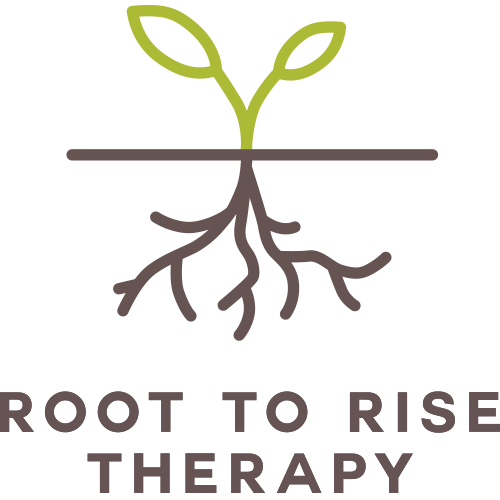What is Emotional Regulation?
Or, The Personal Steps Needed for Harm Reduction During Conflict
Your heart is pounding. Your head is heating. You’re even starting to schvitz a little bit. You’re a 10/10 pissed at your partner (or friend or colleague or family member) and all you want to do is deliver an enraged and escalating monologue like Jack Nicholson in A Few Good Men shouting, “You can’t handle the truth!” You need an outlet for your emotions, and more importantly, you want the person who ignited your anger to understand their impact.
Why Do Conflicts Escalate So Quickly?
This is often how we handle conflict in our relationship and this is often how we exacerbate and prolong resentments before peace and understanding can be restored. We fight and muscle through the rough times to get to resolution and repair. But what if there was a way to make the sparring hurt a little less? What if there was a way to communicate your very real feelings in a way that your partner/friend/colleague/family member could actually hear, without putting up their defenses or jabbing back? What if there was a way to take your level 10 emotions and process them, on your own, until they become a more manageable level 4 or below?
It’s called emotional regulation, sweetie, and it’s an imperative step to conflict resolution.
What Happens When We Skip Emotional Regulation?
One of the reasons why conflict becomes so dangerous and unruly in relationships is due to the heightened emotionality of each person and the natural defensive and retaliatory responses elicited. In other words, when we hurl our raw, level 10 emotions at another person during conflict, it will most likely be met by more heightened emotion, defensiveness, or even complete emotional withdrawal or shut down. It’s difficult to get to any sort of resolution from this place and often requires an extreme or severe denouement, where unforgettable words are thrown, regrettable actions transpire, and deep emotional pain or betrayal ensues, inflicted by “the love of your life” or “the person you’re supposed to trust the most”.
There is a path that circumvents this treacherous and painful route through conflict by personal emotional regulation.
How Do You Know When to Regulate Your Emotions?
When you begin to sense your emotions heightening (heart pounding, head racing, eyes tearing, etc.) this can quickly become a cue for you to excuse yourself from the conversation and initiate emotional regulation.
What Are Some Emotional Regulation Techniques?
There are various and copious techniques and formats to regulate emotions. Some involve breathing and grounding somatically. Some involve focus and presence through naming various objects or sensations. My favorite is R.A.I.N. which is, essentially “sitting with” and interviewing your level 10 emotion through four steps, represented through the acronym. You can interact with the following steps in your head or you can write them down.
Step 1 or “R” is Recognize: What am I feeling right now? Identify, name, or put words to your feelings. “Okay, I’m feeling really angry and pissed off right now.” Refrain from spinning out into the narrative and stick with the feeling word.
Step 2 or “A” is Allow: Can I let myself feel this safely? Allow yourself to truly feel your named feeling. We often skip over this step. Maybe it wasn’t okay to feel your feelings growing up. Or maybe it’s just what you learned to do to get to peace of resolution quicker. Ask yourself where you feel the feeling in your body. Maybe you assign it a color or character. What’s it like to indulge this feeling (safely)? “I’m feeling this anger like heat in my upper chest, rising to the back of my head. I feel really restless in this anger and compelled to explode.”
Step 3 or “I” is Investigate: What’s underneath this feeling? Ask yourself why you feel this way, beyond the plot points of the conflict. What does this feeling remind you of? Have you felt it before? What’s the story you tell yourself when you feel this feeling? What’s the meaning you’ve ascribed? “I’m angry because the situation feels unjust and I feel like I was betrayed. This reminds me of how I felt when I was an adolescent and my parents split up without telling me beforehand. I felt so dismissed and disregarded then, which actually made me feel so insignificant and alone. Maybe I’m feeling overlooked, rejected and alone in the midst of this argument right now, too?”
Step 4 or “N” is Nurture: How can I comfort myself right now? Allow a more compassionate and accepting voice to validate your present emotional state. Acknowledge what you’ve discovered through this process and tell yourself, “that makes sense. You’re okay. I love you. Even if you have uncomfortable feelings”. (TherapistAid.com). You might even want to wrap your arms around yourself and give yourself a NON-IRONIC big hug.
What Changes After You Regulate?
Once you’ve run your level 10 feeling through this R.A.I.N. emotional regulation process, it can almost be expected that your level 10 severity has decreased to a more manageable emotional level than before. (If not, then perhaps it’s an invitation to spend more time exploring each step in depth). Perhaps you even feel a little relief after “sitting with your feelings” and gaining more knowledge and awareness about your emotional state. When we attune to our own feelings, without fixing or suppressing or silencing, we actually gain more control over our emotions by validating and trying to understand them.
With more knowledge and validation around your own emotional state, and with a decreased level of severity, you can now continue the conversation around the particular conflict with more control, more self-trust, and more ability to communicate how you’re feeling and why. And if you can communicate this calmly, your partner/colleague/friend/family member will be able to hear and understand you more, while you will be able to hear and understand them.
If you’re interested to learn more about emotional regulation techniques and how this can play a role in your relationships, especially around conflict, reach out to our Client Care Coordinator today to find a therapist who can help you “sit with your feelings”, especially before continuing conversations around conflict.
Warmly,
Ali Eagle, AMFT






